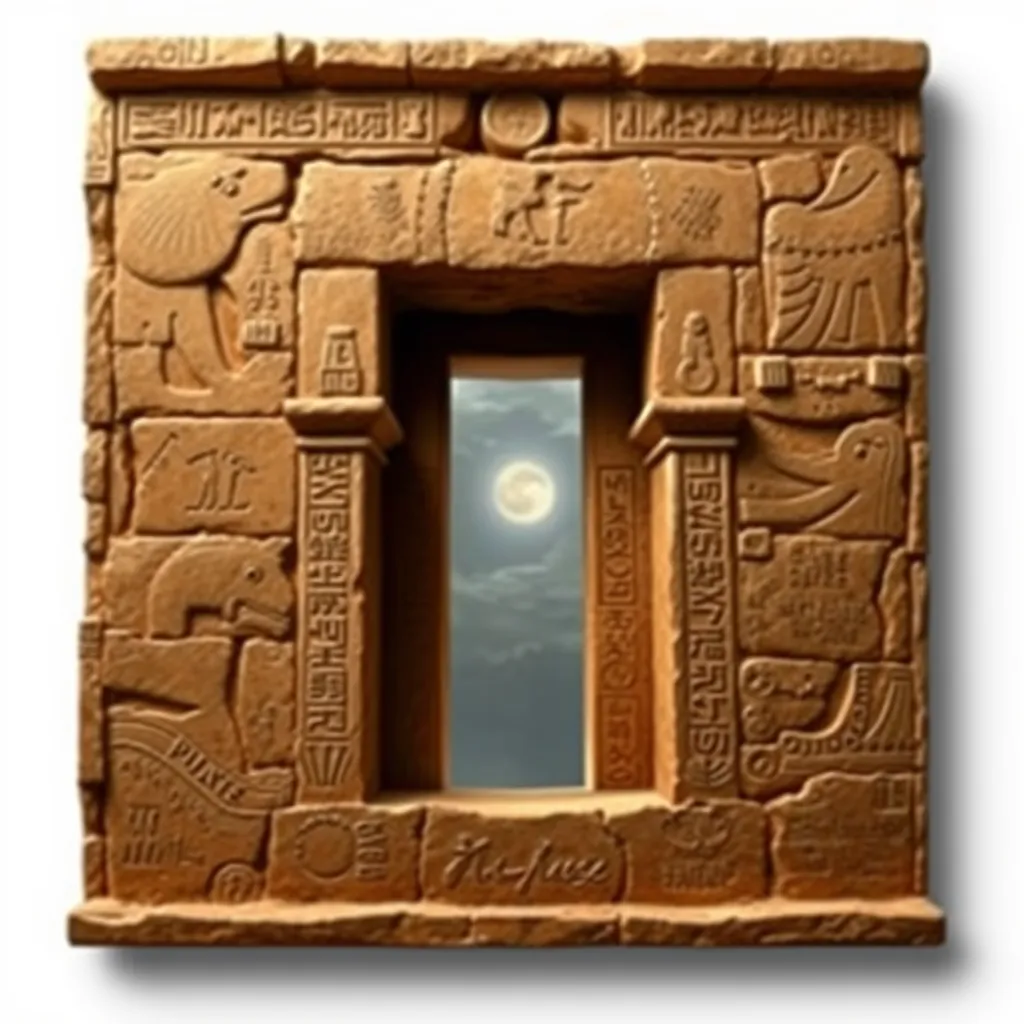The Duat: A Window into the Soul
I. Introduction to the Duat
The Duat, a term rooted in ancient Egyptian mythology, refers to the realm of the afterlife where souls journey after death. This mystical place holds significant importance as it embodies the Egyptians’ beliefs about life, death, and what lies beyond. For the ancient Egyptians, the Duat was not merely a destination but a complex landscape filled with trials, divine beings, and profound spiritual meaning.
In essence, the Duat serves as a window into the soul, reflecting the individual’s journey towards the afterlife and their ultimate fate. It is a realm where the deceased confront the consequences of their earthly life and seek to achieve immortality through the favor of the gods.
II. The Structure of the Duat
The Duat is often depicted as a vast and intricate landscape comprising various regions, each representing different aspects of the afterlife. Its geography is characterized by:
- Darkness and Light: The Duat is a place of contrasts, where darkness prevails but is occasionally pierced by the light of the sun god Ra.
- Rivers and Lakes: The Nile, the life-giving river, also flows through the Duat, symbolizing both sustenance and the journey of the soul.
- Fields of Aaru: This idyllic paradise is where the souls of the righteous dwell, akin to the concept of heaven.
Within the Duat, the Twelve Hours of Night play a critical role. Each hour represents a stage in the soul’s journey, filled with challenges and encounters with various deities. The successful navigation through these hours is crucial for the deceased to attain eternal life.
III. The Journey through the Duat
The journey through the Duat is fraught with trials and tribulations. Souls must navigate through a series of obstacles and tests that challenge their worthiness. Some of the notable challenges include:
- Monsters and Serpents: The deceased may encounter fearsome creatures that symbolize chaos and evil, representing the soul’s fears and doubts.
- Obscured Pathways: The journey is often shrouded in darkness, requiring the deceased to seek guidance and light.
- Divine Judgment: The souls are judged by Osiris and other deities, who assess their deeds during their earthly life.
The gods and divine beings play a pivotal role in guiding souls through the Duat. Key figures such as Anubis, the god of mummification, and Thoth, the god of wisdom, provide assistance, ensuring that the soul receives the necessary support to overcome the obstacles encountered.
IV. Symbolism and Interpretation
The Duat serves as a profound reflection of the human soul and its complexities. It symbolizes the eternal struggle between light and darkness, good and evil, and life and death. The journey through the Duat can be interpreted in several ways:
- Light as Knowledge: The light represents enlightenment and wisdom, guiding the soul towards truth.
- Darkness as Fear: The darkness embodies the fears and uncertainties faced by individuals in life and after death.
- Transformation: The journey signifies the transformation of the soul from the physical realm to a spiritual one, leading to rebirth.
V. The Role of the Heart and the Weighing of the Soul
Central to the concept of judgment in the Duat is the heart, which is believed to hold the essence of a person’s character and actions. The heart’s significance is twofold:
- It is seen as the seat of emotions and moral judgment.
- It is the object of the weighing ceremony, determining the soul’s fate in the afterlife.
The Weighing of the Heart ceremony is a critical moment in the journey through the Duat. In this ceremony, the deceased’s heart is weighed against the feather of Ma’at, the goddess of truth and justice. If the heart is lighter than the feather, the soul is deemed worthy and allowed to enter the Fields of Aaru. Conversely, a heavier heart signifies a life of wrongdoing, resulting in the soul being devoured by Ammit, the devourer of souls.
VI. The Duat in Ancient Egyptian Art and Literature
The Duat has been vividly depicted in ancient Egyptian art and literature, serving as a testament to the culture’s rich beliefs about the afterlife. Key depictions include:
- Tomb Paintings: Tombs were adorned with intricate paintings that illustrated the journey through the Duat, offering guidance to the deceased.
- Funerary Texts: The Book of the Dead contains spells and instructions for navigating the Duat, emphasizing its significance in the afterlife.
- Artifacts: Various artifacts, including amulets and statues, were created to protect and assist the deceased in their journey through the Duat.
These artistic representations not only reflect the ancient Egyptians’ beliefs but also provide insights into their understanding of life after death, the nature of the soul, and the importance of divine guidance.
VII. Modern Interpretations and Relevance
The concepts surrounding the Duat continue to influence contemporary spiritual beliefs and practices. In modern interpretations:
- Spiritual Growth: Many see the Duat as a metaphor for personal transformation and growth, reflecting the journey of self-discovery.
- Literary Influence: The themes of the Duat resonate in literature and popular culture, where the struggle between light and darkness is a common motif.
- Symbol of Hope: The Duat represents hope for an afterlife, encouraging individuals to live ethically and seek personal enlightenment.
VIII. Conclusion
In summary, the Duat serves as a crucial element in understanding the ancient Egyptian perspective on the soul and the afterlife. It embodies the complexities of human existence, the duality of light and darkness, and the significance of moral judgment. The enduring legacy of the Duat continues to inspire and provoke thought about spirituality, morality, and the human experience, highlighting its timeless relevance in human thought and culture.




